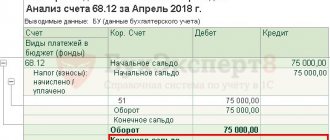The coming year 2021 has brought a number of tax innovations that an entrepreneur needs to know.
Let us remind you that individual entrepreneurs are required to pay taxes. Its tax burden directly depends on its taxation system.
All individual entrepreneurs can pay taxes according to the general taxation system. But some, if they meet the criteria, can choose the preferential system.
Individual entrepreneurs are also required to pay mandatory insurance premiums for themselves.
These contributions do not depend on income and are paid even if there is zero profit or if the business is operating in the red.
If an entrepreneur has employees, then he must fulfill all obligations as an employer - withhold personal income tax from the income of employees and pay the necessary insurance premiums for them.
In addition, the individual entrepreneur is obliged to submit all reports on time, depending on the chosen taxation system and the size of the staff.
These provisions remain unchanged. But there are innovations that are already functioning. Let's remember them.
No. 2 - tax holidays for beginners
This year, newly registered individual entrepreneurs will be able to take advantage of tax holidays, that is, apply a tax rate of 0% until 2024.
Not all newcomers are eligible for such vacations. Preference is made for individual entrepreneurs working in the production, social or scientific fields, as well as for those who provide household services or provide premises for temporary use.
More details can be found in Federal Law No. 266-FZ dated July 31, 2020.
Features of working on the simplified tax system 6%
The simplified tax system “Income” is a tax regime in which an enterprise is obliged to pay a single tax in the amount of 6% of income received. In some regions, the tariff can be significantly reduced - up to 1%.
The simplified tax system of 6% can be used by individual entrepreneurs and LLCs that comply with the following limits:
- annual income – up to 206 million rubles;
- number of employees – up to 130 people;
- participation in the authorized capital of other companies (for LLCs) – no more than 25%;
- the residual value of fixed assets (for LLC) is no more than 150 million rubles.
Some types of activities are prohibited for entities on the simplified tax system; the full list is in Art. 346 of the Tax Code.
No. 4 - details for paying contributions and taxes
Tax payment details have changed since 2021! This must be taken into account when filling out a payment order.
1
Carefully fill out detail 17 - “Account number of the recipient of funds.”
2
In detail 15 “Account number of the recipient's bank” you must indicate the number of the bank account (correspondent).
You can pay using your old details until April 30, 2021. Afterwards you need to pay according to new treasury accounts.
You can read more in Letter of the Federal Tax Service of the Russian Federation dated 10/08/2020 N KCh-4-8/ [email protected] ).
How to calculate the tax for individual entrepreneurs using a simplified method based on the results of 2021 without employees
The simplified taxation system (STS) is a tax regime adopted in 2002. “Simplified” is often chosen by representatives of small businesses, both individual entrepreneurs and legal entities, because of the simple procedure for paying taxes and uncomplicated reporting. This mode has some limitations:
- the organization must have less than 100 employees;
- annual income must be less than 150 million rubles;
- residual value is less than 150 million rubles;
- the share of participation of other organizations in it is less than 25%;
- A simplified organization should not have branches.
The “Income” regime of the simplified tax system is especially beneficial for individual entrepreneurs without employees, since with a low level of cash receipts, the tax can be fully paid off by insurance premiums.
For example, in 2021, with insurance contributions to the Pension Fund and the Compulsory Medical Insurance Fund - 32,385 rubles. if an individual entrepreneur has an income of less than 539,750 rubles, then there will be no tax. This is if the entrepreneur paid contributions quarterly.
Basic provisions of the simplified taxation system
When choosing the “simplified” taxation system, you can choose “income minus expenses” as the object of taxation, in which 15% tax is levied on the difference between the organization’s income and expenses, and “income”, in which 6% tax is paid on the amount of income.
The first mode is chosen by those who have a large level of expenses, the second mode – by those whose expenses make up a small part of their turnover. In addition, individual entrepreneurs who do not have employees often choose the “income” mode due to the fact that there is no need to document their expenses.
Features of paying tax on the simplified tax system
The tax required to be paid under the simplified taxation system is called single. Profit tax and personal income tax are not charged to the simplified tax system. There is no VAT charged, except for that which is paid when importing goods into Russia. The tax is calculated based on the results of the calendar year, and it is paid no later than April 30 of the following year by entrepreneurs. For example, the simplified tax system tax for 2021 must be paid no later than April 30, 2021. Legal entities have stricter limits; they must pay before March 31, 2021
But advance payments are made throughout the year. The deadlines for their payment are as follows:
- for the first quarter (3 months) – until April 25;
- for half a year (6 months) - until July 25;
- nine months (9 months) - until October 25.
Advance payments must be made if the individual entrepreneur received income in a given quarter. If there was no income, then there is no need to make advance payments.
Advance payments calculated and paid during the reporting year are taken into account when calculating tax for the year. In addition, every individual entrepreneur without employees, regardless of the tax regime, must pay insurance premiums for himself. These payments reduce the tax amount down to zero for low income levels.
Calculation of tax for the object “income” using a specific example
Let’s take as an example an individual entrepreneur without hired workers on a “simplified” market who rents premises and is engaged in sewing and repairing clothes. He has a cash register for payments by individuals and a current account for settlements with legal entities and the purchase of fabrics and accessories.
Using the calculator in the left column of the site, we calculate its annual and advance tax for 2021 based on the following initial data:
- for the 1st quarter he received an income of 121,920 rubles. (non-cash and cash receipts);
- for the 2nd quarter the income was 156,126 rubles.
- 3rd quarter – 98,451 rub.
- 4th quarter – 182,340 rubles.
Contributions for compulsory pension and health insurance were paid:
- 1st quarter – 6636 rub. 25kop. to the Pension Fund and 1460 rubles. to the Compulsory Medical Insurance Fund (total 8096 rubles 25 kopecks);
- 2nd quarter – 6636 rub. 25kop. to the Pension Fund and 1460 rubles. to the Compulsory Medical Insurance Fund (total 8096 rubles 25 kopecks);
- 3rd quarter – 6636 rub. 25kop. to the Pension Fund and 1460 rubles. to the Compulsory Medical Insurance Fund (total 8096 rubles 25 kopecks);
- 4th quarter – 6636 rub. 25kop. to the Pension Fund and 1460 rubles. to the Compulsory Medical Insurance Fund (total 8096 rubles 25 kopecks);
As you can see, the payments were distributed across quarters and amounted to the required 26,545 rubles. per year for pension insurance and 5840 rubles. for medical
Fill the calculator with this data. We indicate the object of taxation (income), leaving 6% in the tax rate line.
Next, fill in the income fields by quarter, rounding kopecks to rubles with the original data.
The next block is “Contributions paid to the Pension Fund and the Federal Compulsory Medical Insurance Fund”, here the amounts for quarters are identical, we enter in 3 quarters - 6636, rounding up kopecks. And in the latter - 6637, taking into account the discarded kopecks, otherwise the annual amount will not add up.
PS The calculator now allows you to enter numbers with kopecks, so the calculation is simplified for users of the service. We drive to each field - 8096.25.
Be sure to put o, otherwise the tax will be calculated incorrectly (in this particular case).
The individual entrepreneur from this example is not a payer of the trade tax, so we do not fill out the block of the same name (and do not put zeros).
Then click the “Calculate” button. As a result, we obtain the calculated values of advance and annual tax.
Below are the values for filling out section 1.1. declarations:
And section 2.1.1 of the declaration:
If you put this data in, it will already be included in the declaration.
What to do if the individual entrepreneur did not pay advance tax payments or paid them, but the amounts differ from those calculated?
If there were no advance payments, we pay the entire tax amount in one payment. We find out the amount by adding lines 020, 040, 070, 100 or using the calculator in the left column of our website.
In the event that there have been tax payments, but they differ from the values in lines 020, 040, 070 and 100, then we look at the total amount of tax and pay exactly as much as is necessary for this. If a large amount was transferred, then there are two options:
- return the overpayment to your current account;
- offset the overpayment against the payment of another tax transferred to the budget of the same level.
In both cases, you must contact your tax office.
Author of the article Burenin Viktor
Author of a series of articles devoted to optimization of taxation and submission of tax reports under the simplified tax system, administrator and consultant of the website deklaraciya-usn.ru on these issues. Entrepreneur since 2004 […]
Determination of insurance payments to the Pension Fund and the Federal Compulsory Compulsory Medical Insurance Fund for 2021
Insurance payments for compulsory insurance are calculated as follows:
- for 2021, the size of the fixed payment (that is, not depending on the amount of income received by the businessman) is equal to 26,545 rubles (for the current year - 29,354, for 2021 - 32,448);
- If a businessman received an income in 2021 that is above 300 thousand rubles, then he additionally pays 1% of the amount of income exceeding this amount.
The largest amount of insurance payments for compulsory insurance in 2021 is 212,360 rubles. The legislation establishes that the amount of these payments cannot exceed 8 fixed payments.
| Year | The largest total amount of payments for OPS (fixed payment of 1%) | Largest amount of additional payment (1%) |
| 2018 | 212,360 rubles | 185,815 rubles |
| 2019 | 234,832 rubles | 205,478 rubles |
The amount of income for calculating the 1% payment is established according to information from the declaration (page 113, section 2.1.1).
Fines for violating reporting deadlines
If an entrepreneur or individual entrepreneur on the simplified tax system does not submit one of the mandatory reports on time, then they face a fine and, in some cases, blocking of their current account:
- Failure to provide a book of income and expenses on time at the request of the tax inspectorate will result in a fine of 200 rubles.
- A book that records income and expenses that is not stitched or numbered is subject to a fine of up to 30,000 rubles.
- Failure or delay in filing a declaration under the simplified tax system and the RSV is subject to a fine of up to 30% of the tax amount for each month of delay. Minimum 1000 rubles.
- Errors in 6-NDFL fine 500 rubles.
- Failure to submit 6-NDFL is subject to a fine of 1,000 rubles for each month of delay.
- Failure or errors in filling out the SZV-TD fine up to 50,000 rubles.
- Failure or errors in filling out SZV-M and SZV-STAZH fine 500 rubles for each employee for whom a correctly drawn up document was not submitted.
If an entrepreneur or organization using the simplified tax system “Income minus expenses”, at the request of the Federal Tax Service, does not provide documents confirming the expenses indicated in the reports, then a fine of up to 30,000 rubles may be imposed on the business owner.
Accounting and reporting
Tax reporting must take time into account. If there is a staff of employees, then documents are submitted before April 20 (annual), for 2 personal income taxes - quarterly, before the 30th of the next month. Employees must be taken into account - their number is indicated in documents submitted before January 20 (once a year). A simplified taxation system is not provided for LLCs with large turnover.
Is it possible to pay personal income tax before salary payments?
Thus, reducing the tax burden in the financial part is a very real and legal action.
Calculation example
LLC "Guru" is in a simplified tax regime with the object "Income" and has employees. It is necessary to determine the amount of advance payments deducted in the reporting periods of 2021. Actual income, insurance premiums and benefits made, as well as all final calculations are presented in the table below.
The Guru Society reached the end of 2021 with the following indicators:
| Period 2021 | Income on an accrual basis, rub. | Advance payment (tax), rub. | Accrual amounts (contributions and benefits) that can be deducted, rub. | How much can you reduce the advance payment (tax), rub. | Advance payment (tax) to be paid additionally, rub. |
| I quarter | 300 000 | 18 000 (300 000 × 6%) | 10 500 | 9000 (10 500 ˃ 18 000/2) | 9000 (18 000 – 9000) |
| Six months | 800 000 | 48 000 (800 000 × 6%) | 18 500 | 18 500 (18 500 < 48 000/2) | 20 500 (48 000 – 18 500 – 9000) |
| 9 months | 2 000 000 | 120 000 (2 000 000 × 6%) | 50 000 | 50 000 (50 000 < 120 000/2) | 40 500 (120 000 – 50 000 – 9000 – 20 500) |
| Summary of 2021 | 3 000 000 | 180 000 (3 000 000 × 6%) | 102 000 | 90 000 (102 000˃180 000/2) | 20 000 (180 000 – 90 000 – 9000 – 20 500 – 40 500) |
There is an important feature of the calculation of the simplified tax system: when the listed amounts of benefits and contributions are paid by an organization or individual entrepreneur with employees, a reduction in the advance/tax on the amount of contributions and/or benefits as a whole is possible by no more than 1/2 of the advance.









